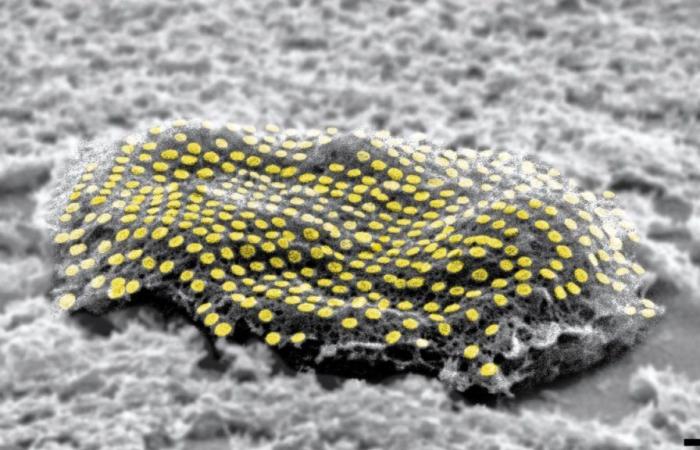It is without a doubt, one of the holy grails of medicine: tracking healthat the cellular level to detect any problems. And two teams of scientists are working on it in parallel using an innovative technology: nanotattoos.
The first of them is made up of two experts from Istanbul University, Onur Ergen and Kristen D. Belcastro. This is a nano-tattoo sensor that enables passive wireless data transfer without the need for external power sources, such as batteries, using the principle of backscatter. The Sensors convert mechanical energy into electrical energy through body movements and communicate through artificial intelligence algorithms with nearby devices. These sensors provide a significant advantage as they transfer data over a wide band range rather than the limited frequencies allowed by RFID tag technology used for similar purposes. For example, thanks to them it would be possible to have a wireless and smart electrocardiogram. The advances have been described in Electron Device Letters.
The other team focused on this technology is led by David Gracias, from Johns Hopkins University. His team has developed nanoscale tattoos capable of adhering to living cellss. Tattoos respond to the movements of the cells as they move and adapt to the moist, fluid outer structure of the cells.
“If we imagine where all this will go in the future, we would like to have sensors to remotely monitor and control the status of individual cells and the environment that surrounds these cells in real time – explains Gracias in a statement -. “If we had technologies to track the health of isolated cells, perhaps we could diagnose and treat diseases much earlier and not wait until the entire organ is damaged.”
The advance has been published in Nano Letters and describes the tattoos or sensors as non-toxic and non-invasive and capable of bridging the gap between living cells or tissues and conventional sensors and electronic materials. They are essentially like barcodes or QR codes.
“We are talking about putting something like an electronic tattoo on a living object dozens of times smaller than the head of a pin – adds Thank you -. “It is the first step towards installing sensors and electronic components in living cells.”
The structures developed by the Gracias team They were able to adhere to the cells for 16 hours, even when the cells moved. The tattoos were constructed in the form of matrices using gold, a material known for its ability to prevent signal loss or distortion in electronic wiring. They attached the matrices to cells that produce and support tissue in the human body, called fibroblasts. The matrices were then treated with molecular glues and transferred to the cells using an alginate hydrogel film, a gel-like laminate that can dissolve after the gold adheres to the cell.
“We have shown that we can attach complex nanopatterns to living cells, while ensuring that the cell does not die – concludes Gracias. “It is a very important result that cells can live and move with tattoos because there is often a significant incompatibility between living cells and the methods that engineers use to make electronic products.”
The next step is to connect more complex nanocircuits that can stay in place for longer periods. They also want experiment with different types of cells and see the responses.






